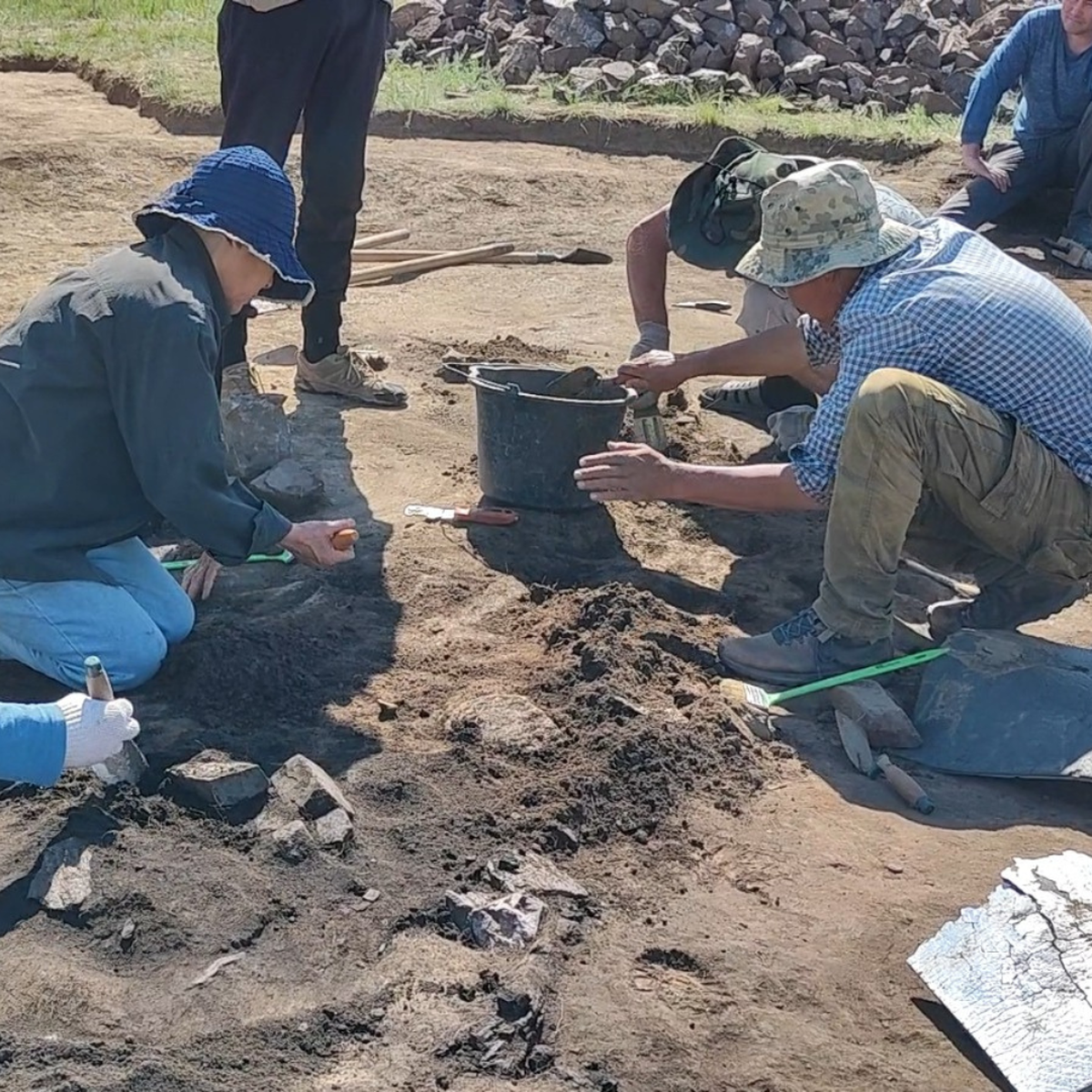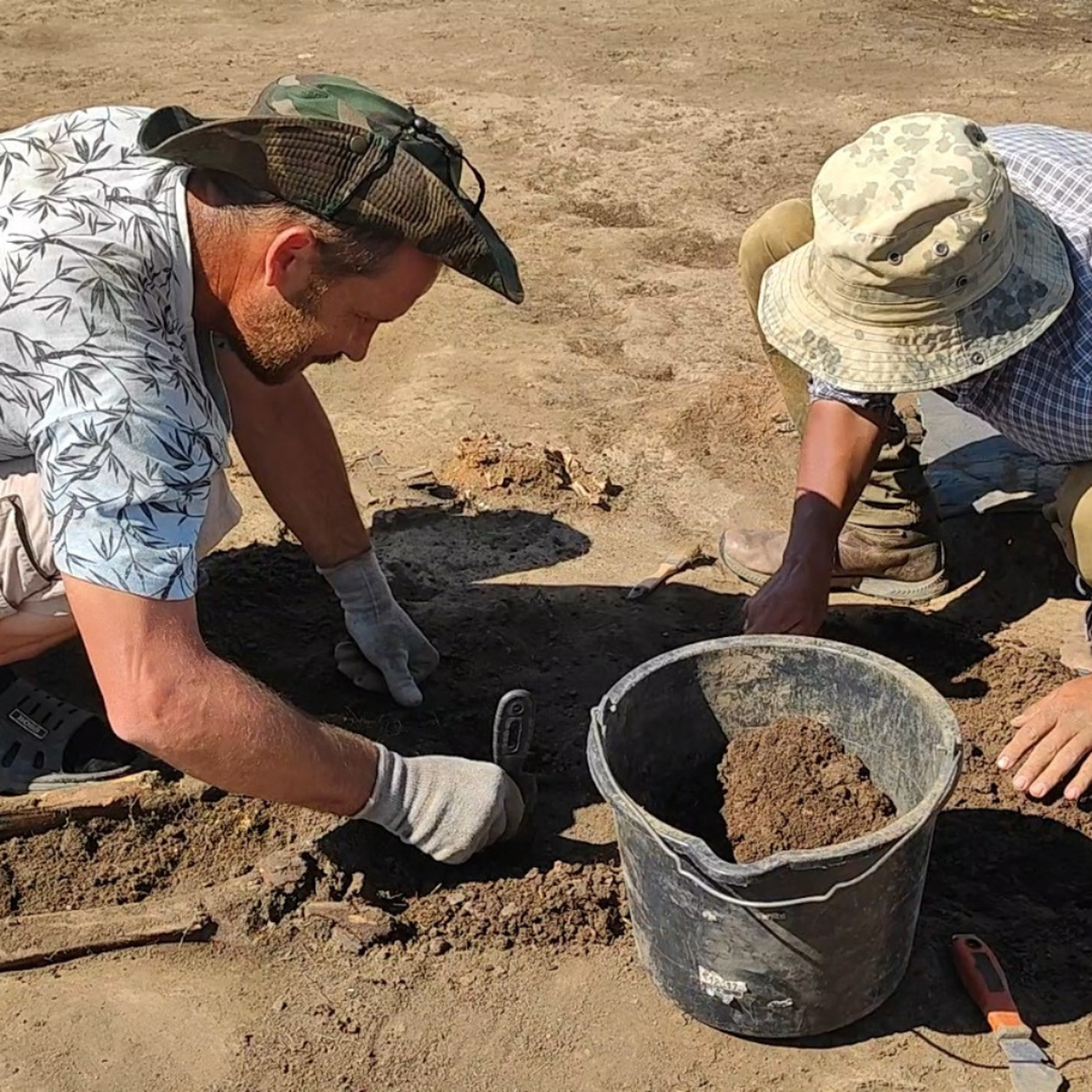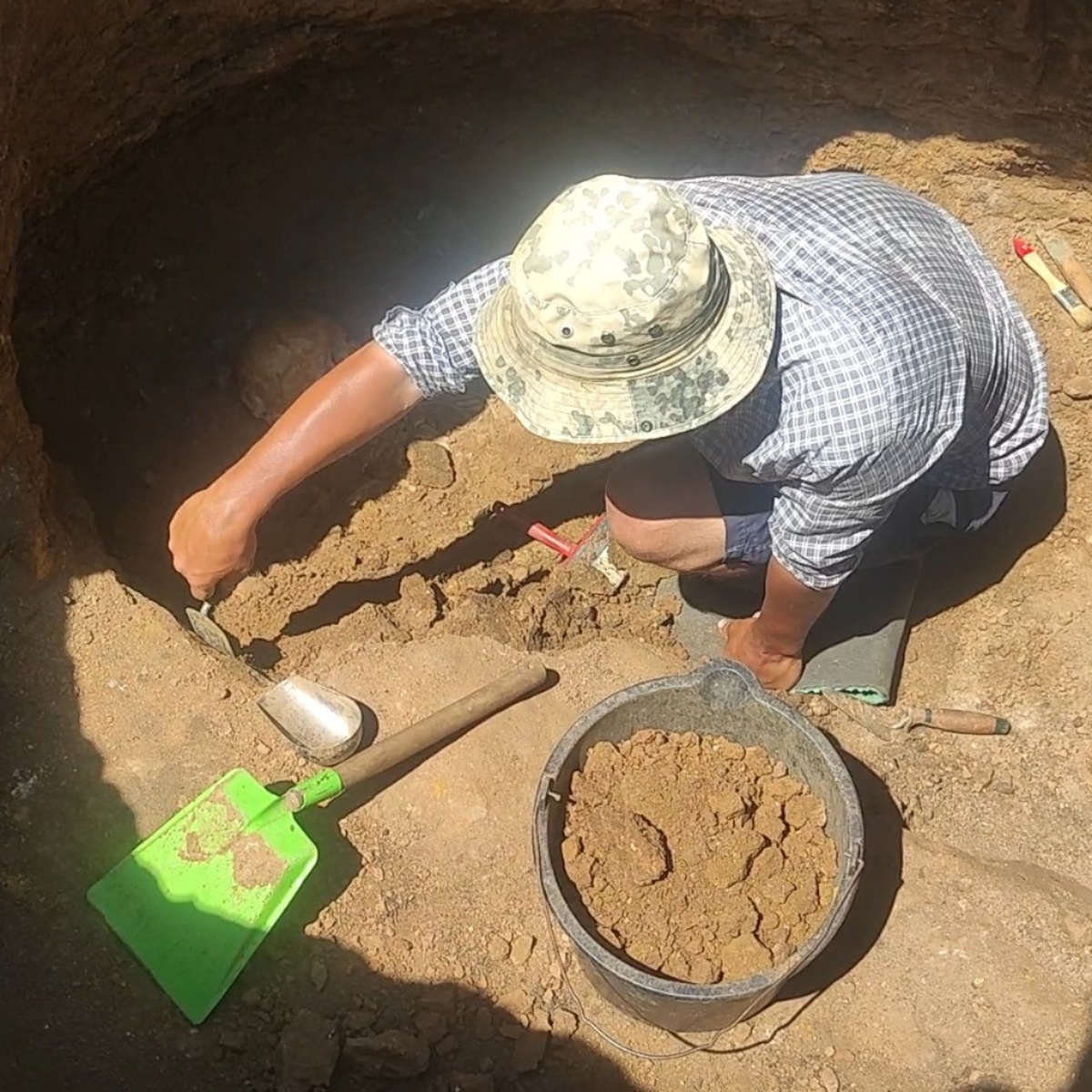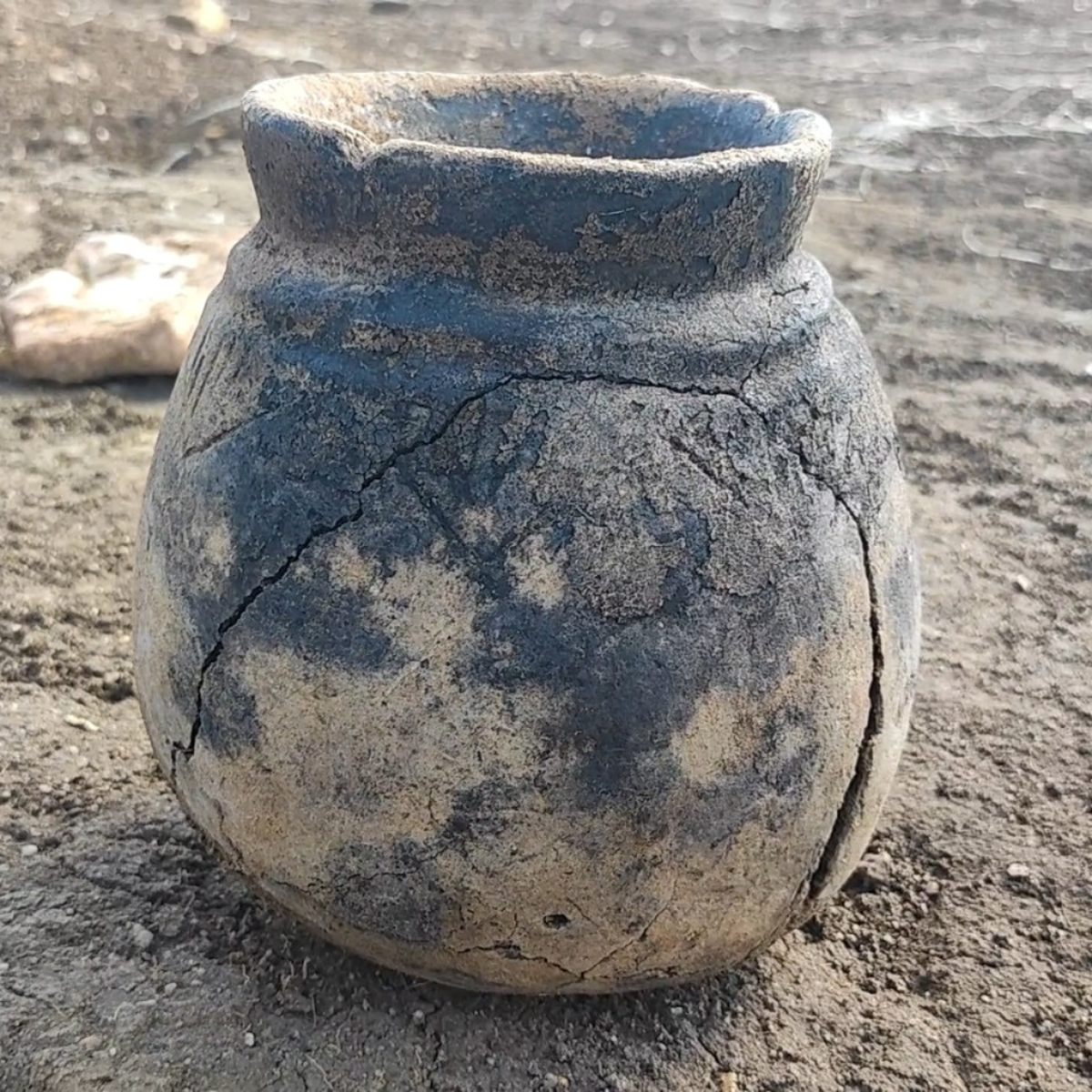Sarmatian Kurgans of Kazakh Pritobolye
03 Aug 2024
As part of the implementation of the tasks under the grant financing project (IRN АР 14870373) of the Committee of Science of the Ministry of Sciences and Higher education of the Republic of Kazakhstan in the 2024 field season, the Kostanay archaeological expedition of the Margulan Institute of Archaeology continued to study the monuments of Besoba-3 and Karatobe-3, located near the city of Jitiqara.
On mound no. 2 of the Besoba-3 burial ground, which is a mound with a "mustache", excavations of the main embankment were carried out, where parts of the horse – jaws and limb bones, fragments of wood and charred remains – were fixed at the level of the buried surface. The study of stone ridges has shown that in most cases they are layouts formed of stone laid in a single layer. The excavations investigated the end structures of both ridges. At the Karatobe-3 burial ground, additional investigation of mound no. 2 was carried out. As a result, four burials were studied (no. 4–7).
The burials were made in sub-rectangular pits, one of them with a lining, covered with wooden flooring from above. In one case, the entrance pit is blocked by stone slabs resting on logs. The buried are laid outstretched on their backs, with their heads facing west and south with deviations. The accompanying inventory is represented by various items and remnants of sacrificial food in the form of animal bones. Among the weaponry, an iron sword of the "transitional" type, sets of bronze hollow arrowheads with three-bladed heads, and belt accessories (buckles, quiver hooks) were found. The jewelry included bronze and iron bracelets, a temporal pendant, and various beads made of transparent stone, carnelian, glass, and chalk. Additionally, two bronze mirrors, a ritual set consisting of bone tubes with coloring substances, chalk, and animal bones were found. A ceramic vessel with a rounded bottom, the remains of wooden dishes, a spinning wheel and iron knives were found among household items. A preliminary analysis of the funeral rite and the accompanying inventory allows us to attribute the burials to the Early Sarmatian culture within the late 4th-3rd century BC, which is mainly indicated by the types of weapons. In general, the discovered finds are of the same type and synchronous with the materials from the graves (no. 1–3) previously examined on this mound.
<iframe width="560" height="315" src="https://www.youtube.com/embed/X-NYLy0UNow" title="Қостанай археологиялық экспедициясының жұмыстары" frameborder="0" allow="accelerometer; autoplay; clipboard-write; encrypted-media; gyroscope; picture-in-picture; web-share" referrerpolicy="strict-origin-when-cross-origin" allowfullscreen></iframe>





